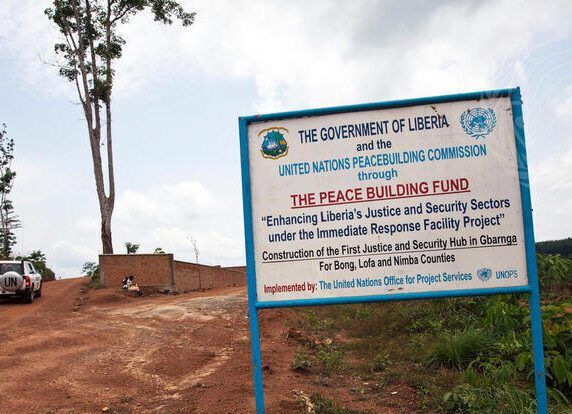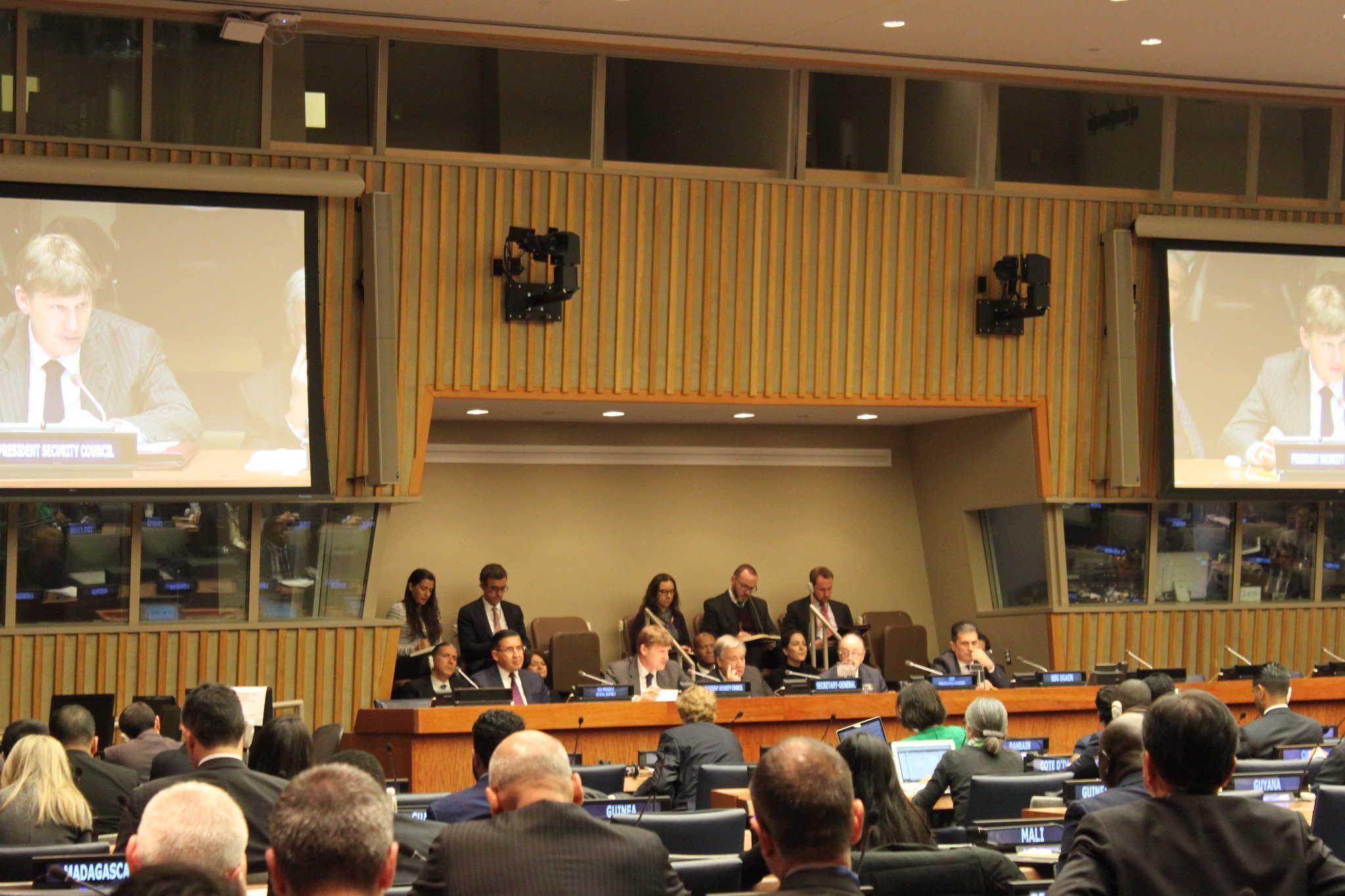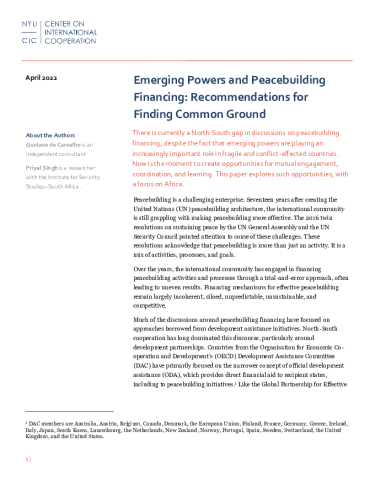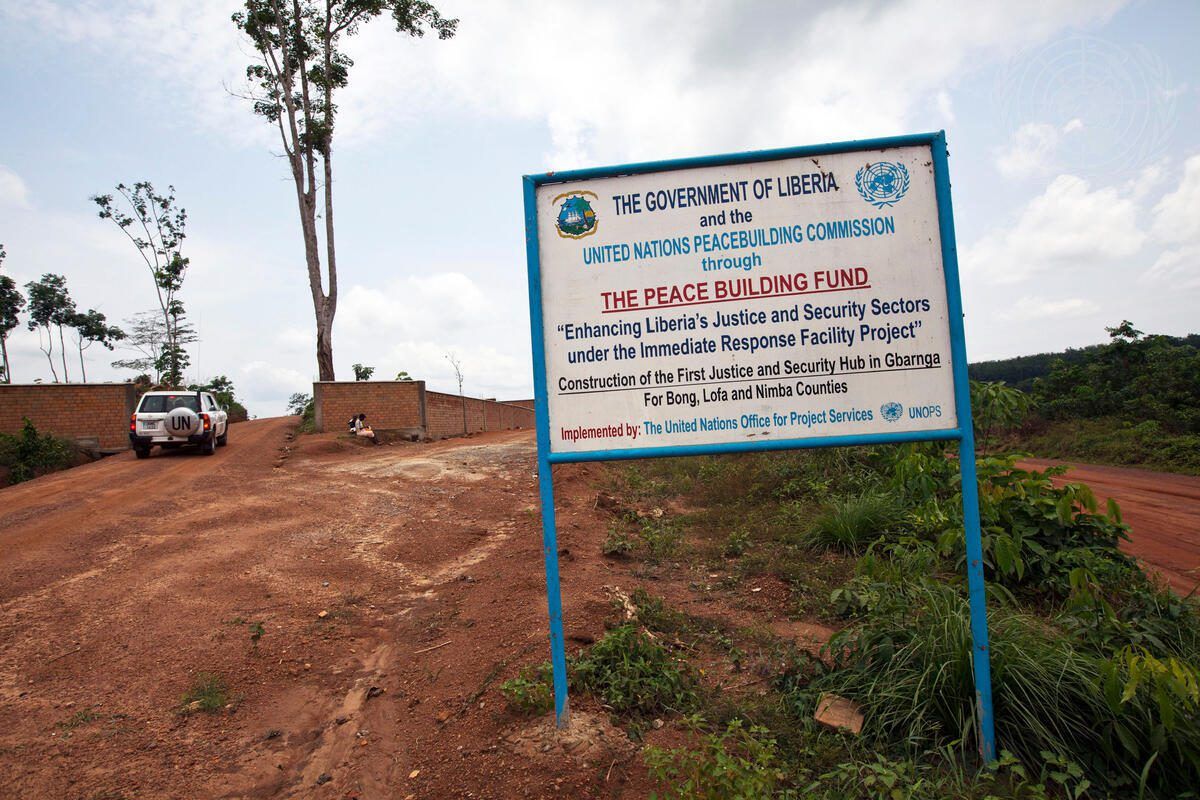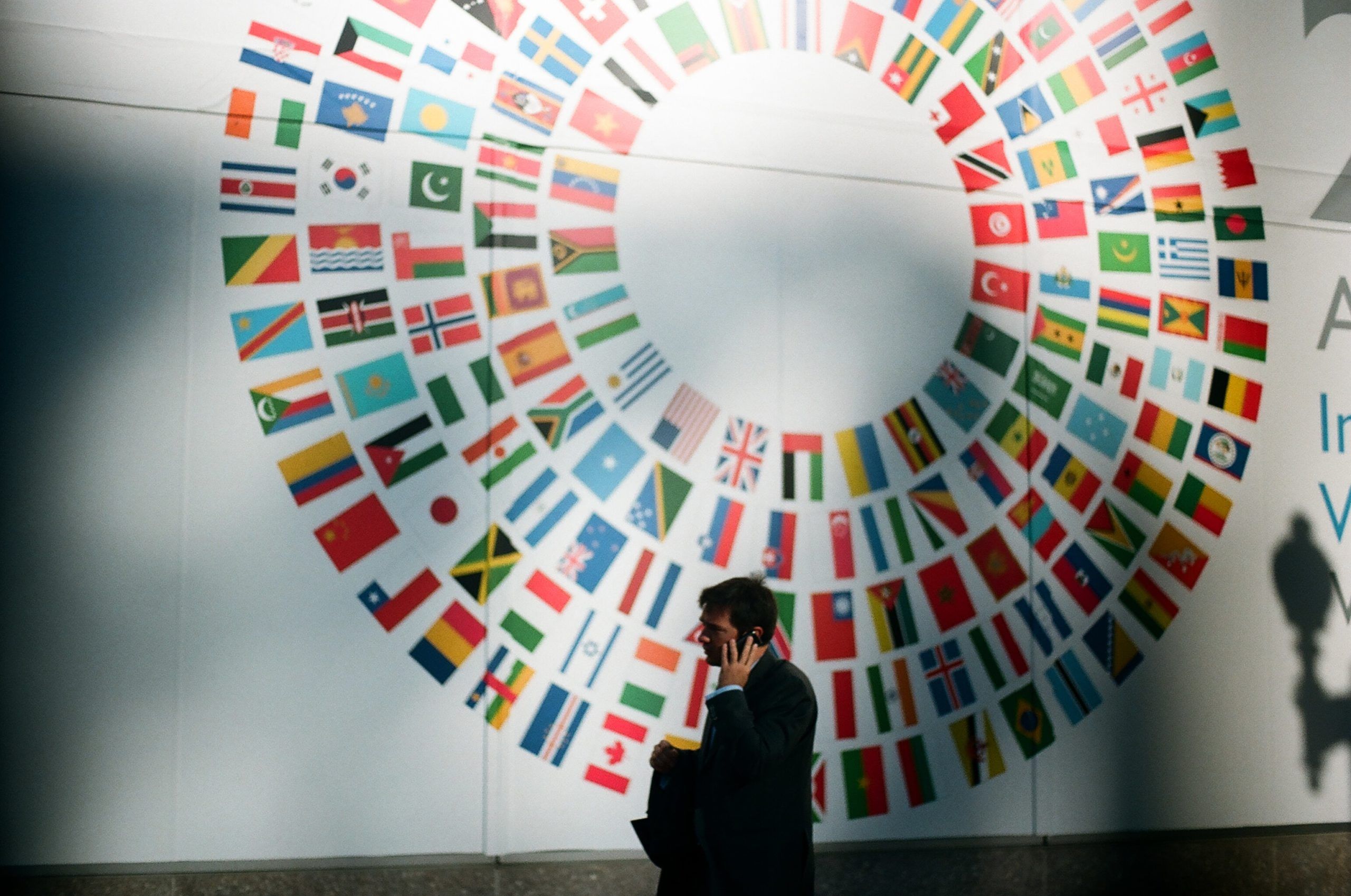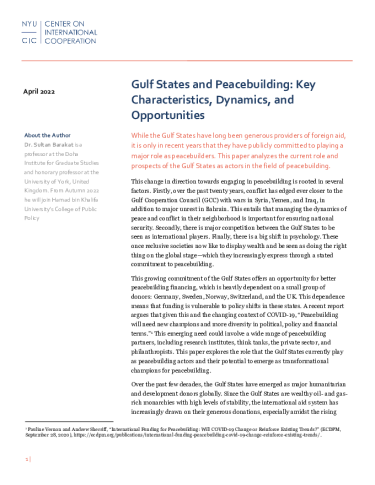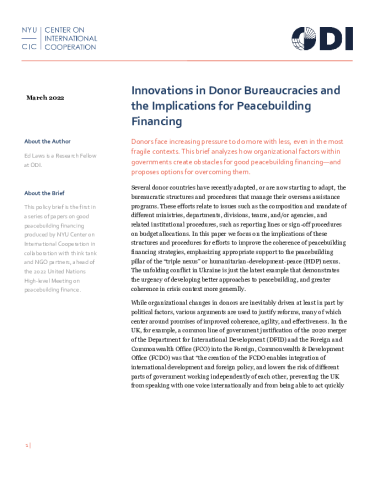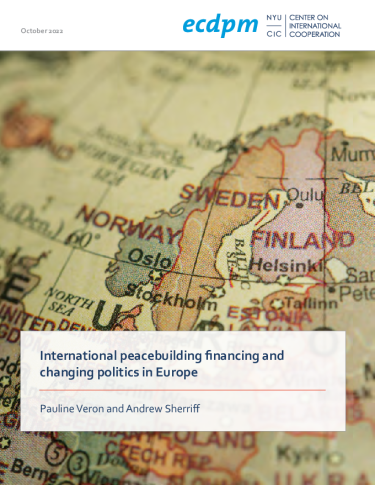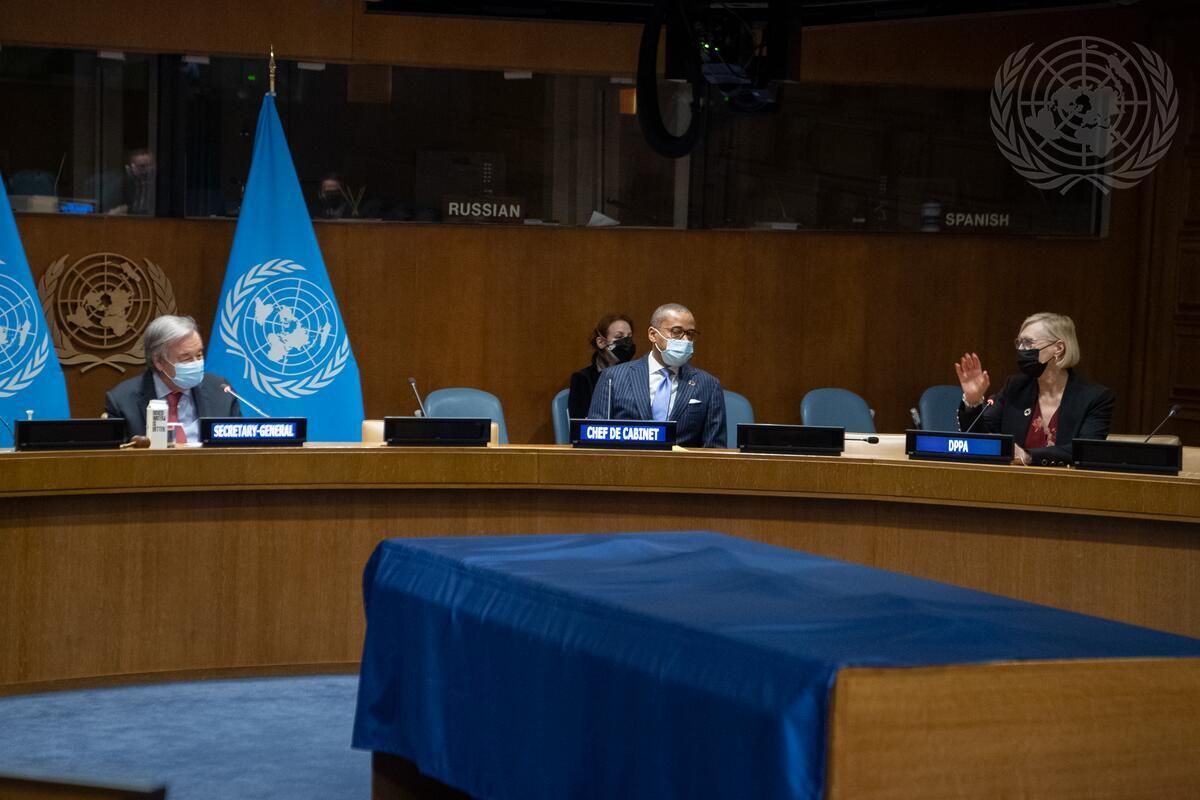Why Do We Need Good Peacebuilding Financing?
Over the past twenty years, multilateral and bilateral actors have recognized the need for ambitious change to address new realities of prevention and peacebuilding. Some of these key moments have included the creation of the UN peacebuilding architecture in 2005, the establishment of the International Dialogue on Statebuilding and Peacebuilding (the New Deal) in 2011, the launch of the World Bank’s new Fragility, Conflict, and Violence (FCV) strategy in 2020 as well as the IMFs current ongoing process of developing a strategy for engaging in FCV contexts.
Despite these efforts, the patterns for financing peacebuilding are stubbornly resistant to change—resulting in continued fragmentation, a proliferation of objectives, a struggle for national ownership, and a lack of coherence at country-level—often resulting from internal incentives within organizations that make it difficult to turn good principles into good practice. The COVID-19 pandemic has placed additional pressures on budgets, both for donors and recipient countries, creating an urgent need to assess how donors can overcome some of these challenges as a practical and immediate matter.
Therefore, in view of this, in 2021, CIC convened a series of technical level discussions and commissioned research papers aimed at building the technical narrative that would guide the understanding on what are the critical principles for GPF.
The objective of this work is to achieve the following:
- Support a platform for technical dialogue on good peacebuilding financing
- Develop technical clarity on what constitutes good peacebuilding financing
- Contribute recommendations on GPF into available political and decision-making processes
